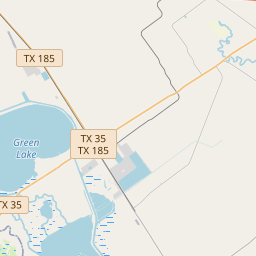Mrs. Angelina Bell Peyton Eberly
Historical marker location:






(about 1800 - March 15, 1860) A Tennessean, Angelina Peyton came to Texas in 1822. With her husband, J. C. Peyton, she operated an inn in San Felipe, capital of the Austin colony. Peyton died in 1834; in 1836 the widow married Jacob Eberly. She and Eberly had a hotel in Austin by 1842, when Angelina Eberly discovered men secretly removing records from the capital. Firing a cannon, she started the "Archives War", and rescued the original records of the Republic of Texas. Later she lived at Indianola. Her burial place and marker (3/4 mile NW) were destroyed in a flood in 1875. Recorded - 1978
As one of the most visible programs of the Texas Historical Commission (THC), historical markers commemorate diverse topics in Texas history, including: the history and architecture of houses, commercial and public buildings, religious congregations, and military sites; events that changed the course of local and state history; and individuals who have made lasting contributions to the state, community organizations, and businesses.
The Battle of San Jacinto fought on April 21, 1836, was the decisive battle of the Texas Revolution, and led to the capture of Santa Anna and the end of the conflict.
During the early 19th century, Calhoun County became a part of the Mexican state of Coahuila y Tejas. However, with the Texas Revolution in 1836, the region gained independence from Mexico and became a part of the Republic of Texas. The county was officially established in 1846 and was named after John C. Calhoun, a prominent statesman and U.S. Vice President.
The economy of Calhoun County has always been closely tied to agriculture, particularly rice and cotton farming. The presence of rich soil and a favorable climate made the region ideal for agricultural production. Later, after the construction of the Gulf Intracoastal Waterway in the early 20th century, the county's economy grew with the expansion of the fishing and shrimping industries.
One significant event in the county's history occurred in 1942 when the U.S. Army established the Matagorda Island Army Airfield. The airfield served as a training facility during World War II and trained thousands of pilots. Today, it is part of the Matagorda Island Wildlife Management Area and is a popular tourist destination.
Calhoun County's history is a testament to the resilience and adaptability of its people. The region continues to flourish, balancing its agricultural heritage with advancements in energy, tourism, and commerce, making it a vibrant and thriving community.
Calhoun County Timeline
This timeline provides a glimpse into the major events and milestones that have shaped the history of Calhoun County, Texas.
- 1832 - The area now known as Calhoun County is part of the Mexican territory of Coahuila y Tejas.
- 1836 - Texas gains independence from Mexico and Calhoun County is established as a separate entity.
- 1839 - The town of Indianola is founded and becomes a major port on the Texas coast.
- 1852 - Calhoun County is officially organized, with Indianola as its county seat.
- 1875 - A hurricane devastates Indianola, leading to the decline of the town as a major port.
- 1886 - Port Lavaca becomes the new county seat of Calhoun County.
- 1931 - The Discovery Well is drilled, leading to the discovery of oil in Calhoun County.
- 1945 - The Calhoun County Navigation District is created to oversee the development and maintenance of the Port of Port Lavaca.
- 1961 - The Texas Gulf Sulphur Company begins operations in Calhoun County, leading to a significant economic boost.
- Today - Calhoun County is a thriving coastal community with a strong economy based on industries such as petrochemicals, agriculture, and tourism.